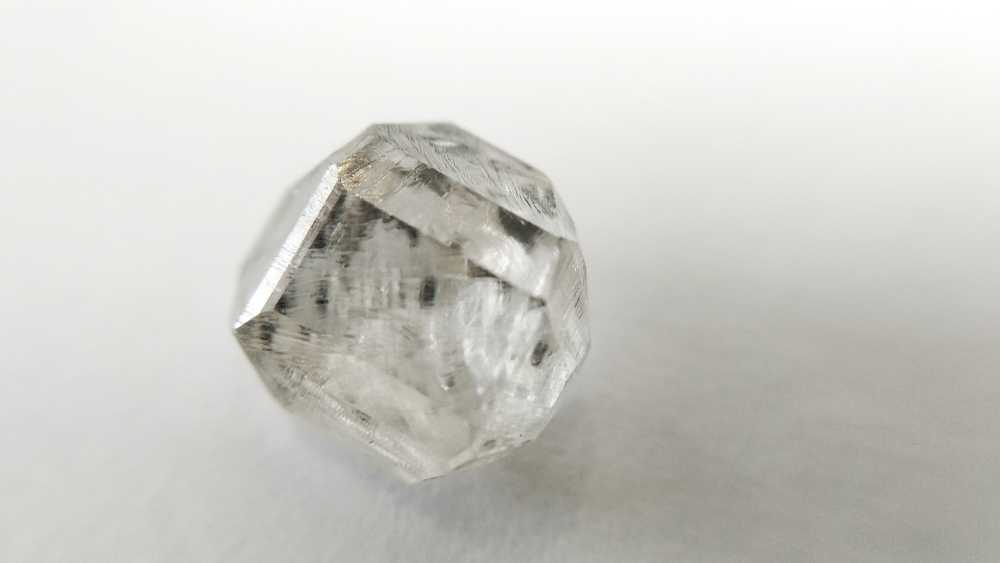
The age-old allure of diamonds has taken on a new dimension in the modern era with the emergence of lab-grown diamonds. As couples and consumers become more conscious of the ethical and environmental implications of their choices, the debate between lab-grown and natural diamonds has gained prominence. In this exploration, we break down the key differences between lab-grown diamonds and their natural counterparts, shedding light on the factors that influence the choice between these two dazzling options.
Formation: Nature vs. Nurture
Natural Diamonds: Natural diamonds are formed deep within the Earth’s mantle under intense pressure and high temperatures. Carbon atoms crystalize over millions to billions of years, creating the unique structures and characteristics that make each natural diamond distinct. The journey from the depths of the Earth to the surface involves volcanic activity, bringing these precious stones closer to human reach.
Lab-Grown Diamonds: Lab-grown diamonds, as the name suggests, are created in controlled environments, replicating the natural diamond-forming processes. There are two primary methods for producing lab-grown diamonds: High-Pressure, High-Temperature (HPHT) and Chemical Vapor Deposition (CVD). In both methods, a small diamond seed or carbon source is exposed to conditions that stimulate crystal growth, resulting in diamonds that share similar physical and chemical properties with natural diamonds.
Time and Speed of Production: Instant Gratification vs. Geological Patience
Natural Diamonds: The formation of natural diamonds is a geological marvel that requires an extraordinary amount of time. Diamonds can take anywhere from a few million to over a billion years to develop beneath the Earth’s surface. The slow process involves the transformation of carbon under extreme pressure and heat, making each natural diamond a testament to the Earth’s ancient history.
Lab-Grown Diamonds: In contrast, lab-grown diamonds offer a more time-efficient option. Depending on the method used, it takes a matter of weeks to a few months to produce a lab-grown diamond. This accelerated timeline allows consumers to obtain a diamond with specific characteristics in a relatively short period, appealing to those seeking a more immediate and customizable option.
Environmental Impact: Mining vs. Sustainable Production
Natural Diamonds: Diamond mining, particularly in some regions, has been associated with environmental challenges. Large-scale mining operations can result in deforestation, habitat disruption, and soil erosion. Additionally, the carbon footprint of extracting, processing, and transporting natural diamonds contributes to environmental concerns.
Lab-Grown Diamonds: One of the key advantages of lab-grown diamonds is their reduced environmental impact. The controlled production environment minimizes the need for extensive land use and lowers the carbon footprint associated with diamond extraction. For environmentally conscious consumers, lab-grown diamonds represent a more sustainable and responsible choice.
Ethics and Social Responsibility: Conflict-Free vs. Complex Sourcing
Natural Diamonds: The diamond industry has faced scrutiny over the years due to concerns about conflict diamonds, also known as “blood diamonds.” These diamonds are sourced from regions where armed conflict funds rebel movements, leading to human rights abuses. Efforts such as the Kimberley Process Certification Scheme aim to prevent the trade of conflict diamonds, but challenges persist in ensuring complete transparency.
Lab-Grown Diamonds: Lab-grown diamonds are inherently conflict-free. Their production in controlled environments eliminates the ethical concerns associated with traditional diamond mining. For consumers who prioritize social responsibility, choosing a lab-grown diamond provides assurance that their purchase aligns with ethical standards.
Quality and Characteristics: Comparable Brilliance
Natural Diamonds: Natural diamonds have long been revered for their exceptional hardness and brilliance. The unique journey from the Earth’s mantle to the surface contributes to the distinctive characteristics that make each natural diamond a rare and precious gem.
Lab-Grown Diamonds: Advancements in technology have enabled the production of lab-grown diamonds with qualities that closely match those of natural diamonds. The controlled conditions allow for precise control over factors like cut, color, clarity, and carat weight. In some cases, lab-grown diamonds may exhibit even fewer inclusions than their natural counterparts.
Cost: Traditional vs. Affordable Luxury
Natural Diamonds: The rarity and demand for natural diamonds contribute to their higher price point. Factors such as carat weight, cut, color, and clarity further influence the cost of a natural diamond.
Lab-Grown Diamonds: One of the notable advantages of lab-grown diamonds is their affordability. The controlled production process allows for cost savings, making lab-grown diamonds a more budget-friendly option for consumers without compromising on quality or visual appeal.
The Ever-Evolving Diamond Landscape
In the debate between lab-grown and natural diamonds, the choice ultimately comes down to personal preferences, values, and priorities. Natural diamonds, with their geological history and timeless allure, continue to be cherished symbols of love. On the other hand, lab-grown diamonds offer a sustainable, ethical, and often more affordable alternative without sacrificing beauty or quality.
As consumers navigate the ever-evolving landscape of the diamond industry, the decision between lab-grown and natural diamonds represents more than a choice of gemstone—it’s a reflection of evolving values, environmental consciousness, and a desire to make a positive impact on the world. Whether you opt for the elegance of a natural diamond or the sustainability of a lab-grown gem, the beauty and symbolism of these precious stones endure, shaping the stories of love and commitment for generations to come.